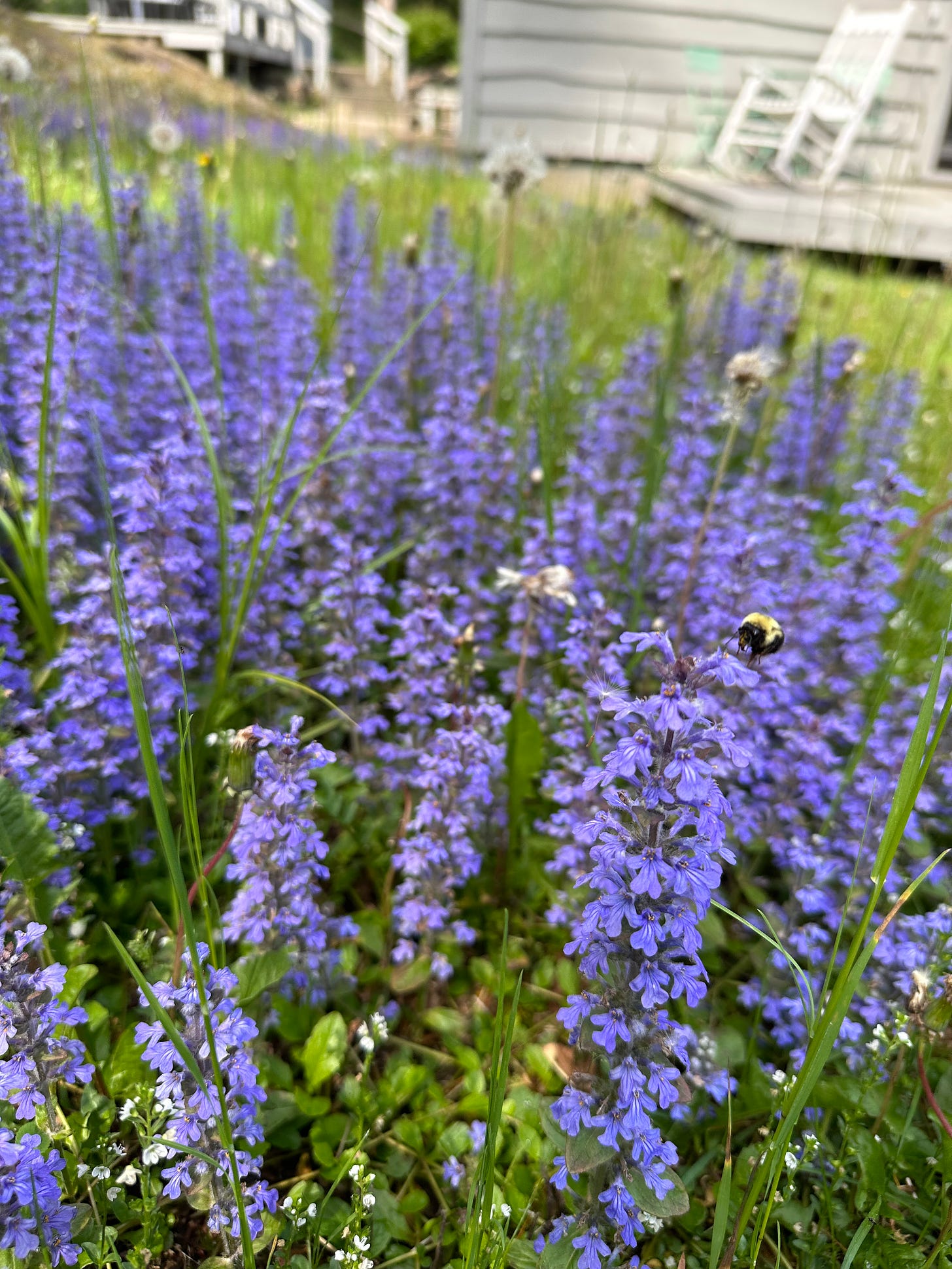When I sold my tugboat (that’s weird to write but it’s true), we purchased a tiny cottage in the Adirondacks, a place to write away from my partner’s family farm. I wanted a place - no matter how tiny - that would feel more like my own.
The art is a little wilder, the blankets a little more indulgent. We didn’t mow the lawn this spring and right now the entire yard is covered in tiny purple flowers which I think are a type of bugleweed - kind of lovely and invasive and charming.
I’m writing at the cottage today. There’s an intense rainstorm striking the tin roof, and I’m watching the phoebe that I’ve come to know, who returns every spring. This phoebe has several locations on the property he or she frequents - a bunk house eave, a perch on a dogwood tree, the corner of the porch, and a tree limb in the swampy conserved wetlands next door. Repeat.
As someone who writes about landscape, I’m drawn to the idea of site fidelity - the concept that certain animals - birds, fish - return to particular sites during their lifetimes to nest and carve out their lives. I don’t think I have this site established yet. Not personally. I wish I did.
It can be a strong force. Someone once told me that loons are even more partial to a lake than one another.
This afternoon, taking a break to work on the dock, I saw a merganser with 20+ chicks - not uncommon, as mergansers will adopt chicks separated from mothers. Ducks also lay eggs in others’ nests as a protective measure, hoping at least one clutch will make it. These mergansers were trying to outrun a storm, then construction. Habitat stress.
My phoebe belongs to this little plot of land moreso than I, and I try to respect her space. I woke up one morning to several wild turkeys roosting on my porch. I try to never scatter the deer grazing on my hydrangeas, an exercise in peaceful cohabitation.




